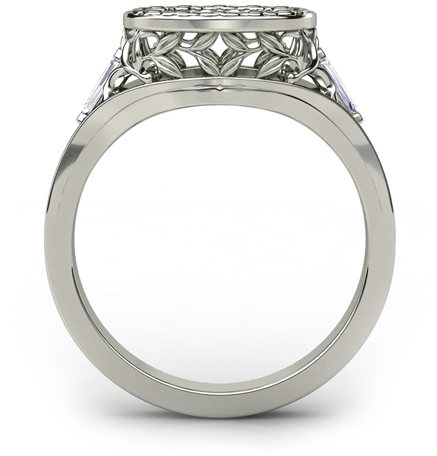Our Technology
Technology At The Natural Ruby Company
We recognize the immense potential of new techniques and equipment to enhance our ability to create custom jewelry pieces for our customers. Using everything from advanced design software to 3D printing technology, our creative team is always eager to explore new frontiers in craftsmanship and jewelry design.
Precision Cutting
The Natural Ruby Company’s lapidary maintains the highest standards. A well cut and finely polished ruby will enhance its brilliance, size, and color.
Imprecise cutting can leave a ruby with undesirable features. A ruby’s beauty and value heavily depend upon its color; even the tiniest miscalculation in cutting can diminish a stone’s worth.
CAD/CAM Production
Cutting a ruby is only the beginning of the jewelry-making process. Once you’ve selected your natural ruby, you have the option of placing it in one of our classic settings or working with our designers to develop a custom mounting of your own. Our innovative 3D jewelry design software allows us to create a detailed image of your ruby in your specific setting. This program also gives us increased design flexibility, and any corrections or changes can be made quickly. This virtual preview of your finished jewelry removes any guesswork, so you can be sure your ruby is set precisely as you want it.
When your jewelry design is finalized, we employ Computer Aided Manufacturing (CAM) to transform the 3D CAD file into a solid wax model. The digital CAD file guides a 3D printer as it deposits ultra-thin layers of wax to “grow” a precise model of your jewelry. Built in layers as thin as 0.013 millimeters, these wax models are accurate to within 0.025 millimeters. This tremendous resolution allows the 3D printer to produce extremely complex and accurate jewelry models.
Metal Casting

After the wax model is finished and inspected, more traditional casting techniques are employed. In a millennia-old process, a mold is made from the wax model. While automation and high-tech mold materials have been implemented in recent years, the fundamental molding process is the same as the one used by the ancient Sumerians over 4,500 years ago.
After the mold has hardened, it is placed in a kiln or furnace to melt away the wax. Every trace of wax must be removed from the mold; any residue present during casting will cause surface flaws in the metal. Once the mold is entirely clean, it is filled with molten gold or platinum. The metal casting that is created is the foundation of the finished jewelry piece.
Multiple impressions are made in a single mold, connected by a network of channels called “sprues”. It is through the sprues that the molten metal enters and circulates within the mold. The placement and sizing of the sprues are critical since uneven flow or gasses trapped within the metal can ruin the entire casting. Modern casting also employs vacuum technology to ensure the mold is completely and evenly filled. When removed from the mold, a successful metal casting will be an exact replica of the original wax model.

Assembly and Finishing
Most CAD/CAM-produced jewelry is cast as components, which are then assembled by hand. The extreme accuracy made possible by CAD/CAM production ensures an impeccable fit between pieces. With precise CAD/CAM-produced models, elaborate pavé settings can be tailored exactly to the small stones our jewelers select, with no need for drilling once the metal is cast. This makes our glittering pavé jewelry neat, consistent, and more affordable. Once assembled, each piece of ruby jewelry is carefully finished and polished to make sure every detail is perfectly in place.
And that process creates a stunning, expertly crafted piece of jewelry every single time! If you have any questions, let us know, we’re happy to answer them!


